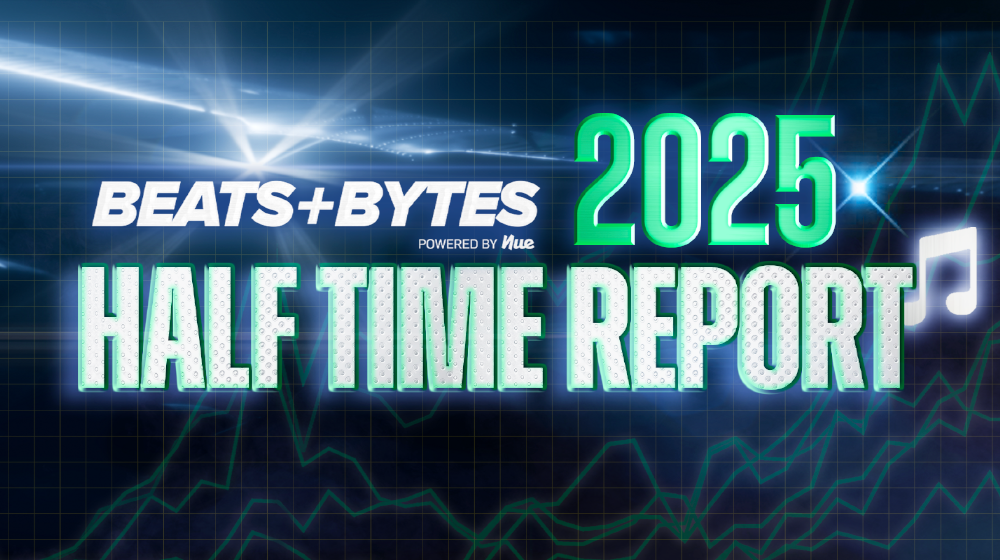
LANGENHAGEN, Germany (Hypebot) – Twenty-seven and a half years ago, the manufacturing of the world’s first compact disc took place at a Philips factory in Langenhagen, Germany. Upon its introduction, the CD was marketed to music fans with regards to its superior sound quality and scratch free durability. But, as time when on, those claims were both highly debated among audiophiles, and, in the case of durability, or “Perfect Sound Forever” as they called it, even refuted completely. When compared to the record in terms of the trade-off between fidelity and convenience that music fans made when choosing formats, it’s clear that the CD offered up far more convenience than records did at the time. Their higher portability and capacity to allow effortless skipping between songs gave the CD a definite edge.
In contrast, the record tended to resonate more deeply with music fans for the reason that it offered a considerably higher degree of fidelity. It has been passionately argued that the record contained more natural sounding music — where the warmness of the instruments and voices hadn’t been lost. Nor had the much finer nuances — such as background noise, minor mistakes, or even the slightest cough — been removed, adding an essence of human touch and imperfection to the format. There was this distinctive, yet intangible quality surrounding records — that seemed representative of the culmination of artistry and musicianship that bleed into their production. Their artwork and liner notes garnered identity not only to the music, but to the music fans themselves who preeminently displayed their vast collections.
Despite the presence of these two subtle components: aura and identity, records were replaced by CDs because their inconvenience trumped their fidelity. This trade-off would happen again once MP3s became widely available, as their ease of use, in the minds of many people, made up for their sheer lack of quality. Not to mention the fact that for several critical years they could be downloaded for free at a time when most CDs, regardless of the pricing war that occurred, were still considered a relatively expensive commitment for the fans who only wanted access to a couple radio singles. Then, iTunes and the social phenomenon of the iPod ignited the penchant for the MP3 over the CD among fans and pushed the format back into what technology writer Kevin Manley calls the fidelity belly.
Almost always, he argues, new technologies start out there, and, at the end of their lifecycle, old ones inevitably fall below this threshold. Once a product or service possesses so little of either convenience or fidelity that consumers are no longer motivated to act, they have fallen into the fidelity belly — where people are no longer excited about them, because, like CDs, they are no longer perceived as needed nor are they deeply loved by fans. This is the place that Manley, after nearly two decades of writing about the technology sector, named “the no-man’s-land of consumer experience,” once he observed that products or services that only offered so-so fidelity, and were only somewhat convenient, didn’t catch on. It’s this problem, he argues, that’s drastically hurting CD sales.
MusicDNA, said to be “the successor to the MP3,” is hoped to amend this disconnect between the desires of fans and the record industry’s current offerings by granting owners of the format access to “additional updated content, including lyrics, artwork, tour dates, blog posts, videos, and Twitter feeds.” Much like the format advancements made by the CD and MP3, the appeal of MusicDNA is based entirely on higher convenience, seeing as all the content that it seeks to make available to fans already exists online, elsewhere. The idea is that by only allowing purchased versions of the format to be updated, while pirated versions remain static, fans will feel more encouraged to purchase these songs and curve their file-sharing habits. But, is locking out “pirates” the right strategy to adopt?
II.
Currently, the record industry is structured around a top-down, highly centralized “push” marketing model — where a few key gatekeepers anticipate the demand for their product in the marketplace and finance the production of music from a small number of artists — based upon what they want to sell to music fans, not on what music fans want to buy. The problem that arises here — if music fans become unsatisfied not only with the product being distributed, but the means through which it is distributed — is that, in times of change, the highly specified, centralized, and restrictive nature of the record industry, and their push systems, prevent them from adapting. It prevents them from experimenting, improvising, and learning as quickly as possible about the changes in consumer behavior.
In From Push to Pull, John Seely Brown argues that, “Push systems not only inhibit product innovation but — even more important — make it much harder to implement incremental process innovations rapidly.” He believes, “The next frontier of innovation will require the broader adoption of pull capabilities as well as less reliance on traditional push systems, which, as demand becomes more and more difficult to forecast, increasingly fail to even deliver the efficiency they were designed to promote.” Over the course of a decade, the record industry’s “push” marketing model, the CD-Release Complex, has severely weakened. Once fans migrated to the Internet and began discovering music outside of the mediums that major labels used to promote new music, the record industry began to decline.
“For as long as anybody in the business could remember, labels relied on MTV, radio, and record stores for exposure,” Steve Knopper writes in Appetite for Self-Destruction. “Push the gatekeepers at those place aggressively enough — in some cases, bribe them — and you’ve got a hit.” But, the “push” mentality of the record industry could not be extended into the digital realm, because all three of these institutions — that they built themselves on the back of — deteriorated in the face of the societal and technological shifts that the Internet brought forth. With that, the media landscape fractured into niches and it rendered push marketing nearly impossible. In its place, what the web, the proliferation of digital technologies, and the rise of the networked audience leads to is "pull" marketing.
“Rather than treating producers as passive consumers whose needs can be anticipated and shaped by centralized decision makers, pull models treat people as networked creators even when they actually are customers purchasing goods and services,” Brown explains. “Pull platforms harness their participants’ passion, commitment, and desire to learn, thereby creating communities that improvise and innovate rapidly.” Prior to the Internet, music was pushed out through specific delivery mechanisms like radio and MTV wherein the fans on the other end were regarded as passive participants in the process. Push marketing was something that you did to fans, but it didn’t involve them. Today, music fans are actively engaged, have the choice to participate, and are “pulled” in directly.
What’s unique about MusicDNA in this respect and the true opportunity that it embodies is that the format’s updatable nature enables “pull mechanisms” to be built within the music itself, rather than existing outside of it. All of the media surrounding an artist can be leveraged at the point of interaction with the music to encourage the participation of audiences. It is in this instance that a commercial culture defined by passivity converges with a participatory culture that promotes activity — where all of the conversations that once occurred in the absence of the music become a vital part of its identity and further evolve it as a social object. In theory, then, the record industry should want to have as many MusicDNA tracks in circulation as possible, to ensure engaged and well-informed fan bases.
So, by only allowing legitimately purchased MusicDNA tracks to be dynamically updated, while unauthorized versions remain static files, what the record industry is denying itself the is ability to engage with “pirates,” to use these songs as “pull mechanisms,” and to leverage this additional media as marketing designed to convert them into paying customers. In denying “pirates” convenient access points to their artists marketing efforts all the record industry ensures by doing this is that these fans will remain as passive consumers of music. When instead they could be cultivated into active participants – those more deeply involved in the career of an artist — who are the most likely to want to buy stuff from them. Even if in the end what they buy is not digital files, but higher priced rarities.
III.
Making the MusicDNA format widely accessible, low-cost, and dynamically updateable by anyone, of course, is not likely the approach that the record industry will take. It is intended to be a scarcity in the face of radical abundance – one that is “hoped” to deter piracy and get fans excited about buying music again. The problem with those claims, though, as author Pip Coburn pointed out in The Change Function, is that, “Sometimes technologists forget just how vast the chasm is between them and real people.” Further arguing that, “it is real people and not technologists who determine the fate of technologies.” In that case, what will be a more realistic fate of MusicDNA? There’s no doubt that it offers convenience, but whether or not is high enough is the big question looming.
Since the MP3 file by default already offers relatively low-fidelity, MusicDNA’s only shot is to be super-convenient, of which digital distribution takes care of in terms of ease of use, but another huge aspect of convenience happens to be cost. If MusicDNA is more expensive than the standard MP3 by too much than the labels risk putting up a barrier that may leave fans thinking that the added value just isn’t worth the extra cost. Seeing as most savvy and diehard fans will have taken the effort to seek out the additional content that’s being tied in with MusicDNA, how the format rates in the eyes of casual fans is what matters. If the appeal isn’t there, it may never leave the fidelity belly, “where neither the convenience nor fidelity is good enough to attract a mass-market audience.”
If that’s the result, a huge opportunity will be lost, and unfortunately, MusicDNA would only serve as an example of how out of touch the record industry is in terms of knowing who their listeners are, let alone knowing what they want. For far too long, fans have been regarded as passive participants and denied access to the experiences they want, and file-sharers have been ignored and litigated. When in fact, as William Patry argues, “Copyright owner’s problems are market problems, and they can only be solved by responding to market demands: strong copyright protection cannot make consumers buy things they do not want to buy and, as the RIAA’s ill-conceived, ill-executed, and ill-fated campaign of suing individuals demonstrates, laws cannot stop individuals from file-sharing.”
This is where the record industry went wrong, in thinking that all “pirates” are created equal and are solely motivated to file-share music because it’s free, not because they are in some way, shape, or form left unsatisfied by the current system. The means through which fans discover, acquire, and consume have evolved so prominently over the course of the last decade; to the point where it’s hard to imagine that our largely unchanged ecosystem still reflects upon the needs of the fans whose obligation it is to service. What MusicDNA presents is the chance for the record industry to reach out to file-sharers, engage them with the content surrounding their artists, acquire their e-mails and permission to market, and to finally propose unique propositions and monetize “pirates” as fans.
At present, though, there is no sober reason to think that fans and file-sharers will be motivated to adopt MusicDNA outright, unless the offering is realistically positioned in terms of price and ease of use. Otherwise, in the fidelity belly it will stay. In order to avoid this fate, an alternate strategy should be considered: flood the networks. Make it so file-sharers ought to want MusicDNA — that they go out of their way to ensure they replace their MP3s with it. Then, activate these files and begin dynamically updating them. From there on out, connect with pirates and give them reasons to buy. In 2008 alone, there were 40 billion chances to do just that. This approach may not ‘save’ the record industry per se, but at least it's better than what they've been doing since the rise of file-sharing. — Kyle Bylin, Hypebot's Associate Editor
























































